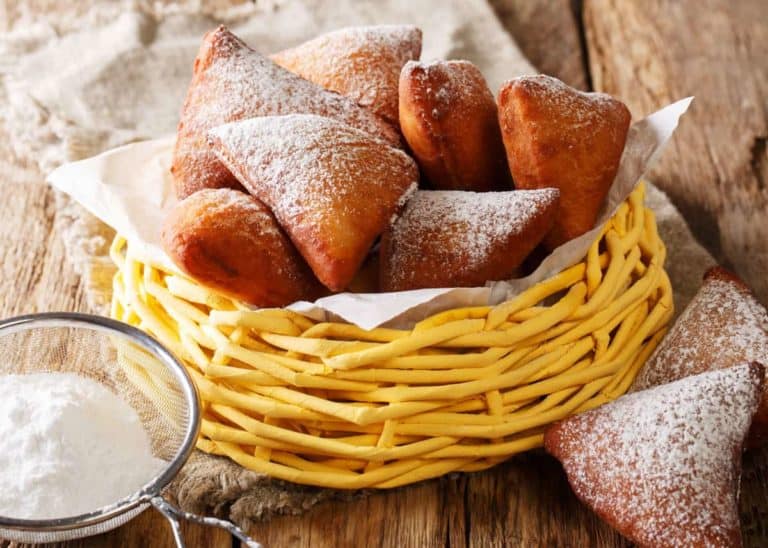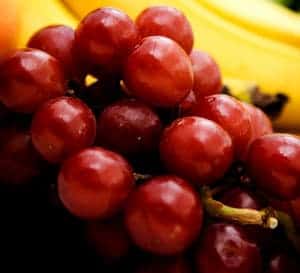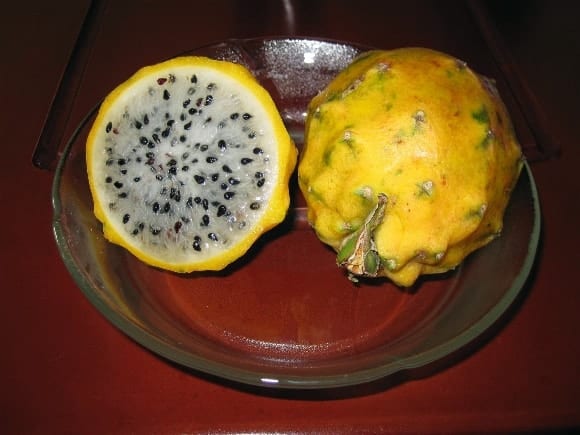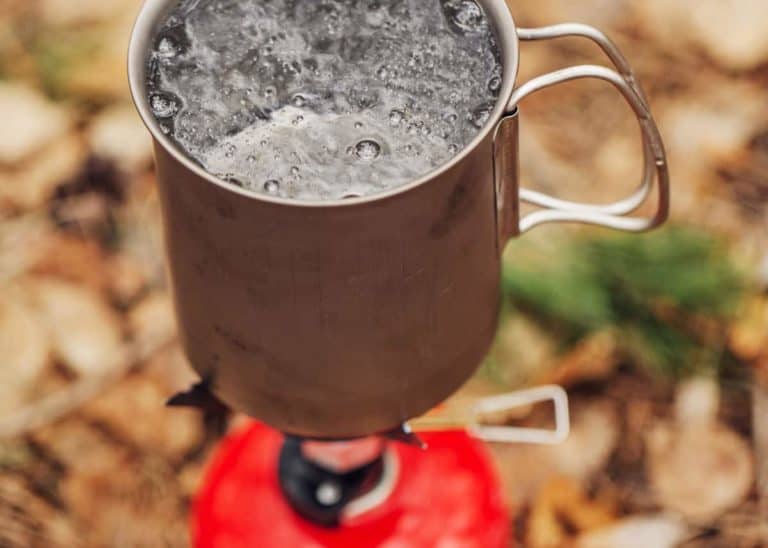Cuban Foods: 28 Tasty Dishes, Desserts, Drinks to Try on Your Next Trip
Looking to try some awesome cuisine? In this article, you’ll learn about 28 Cuban foods, including Cuban-American dishes, desserts, and drinks to either try next time you’re traveling or at home when looking to change things up.
I’m not an expert by any means, but a lot of these dishes look absolutely delicious. Let’s dig in!
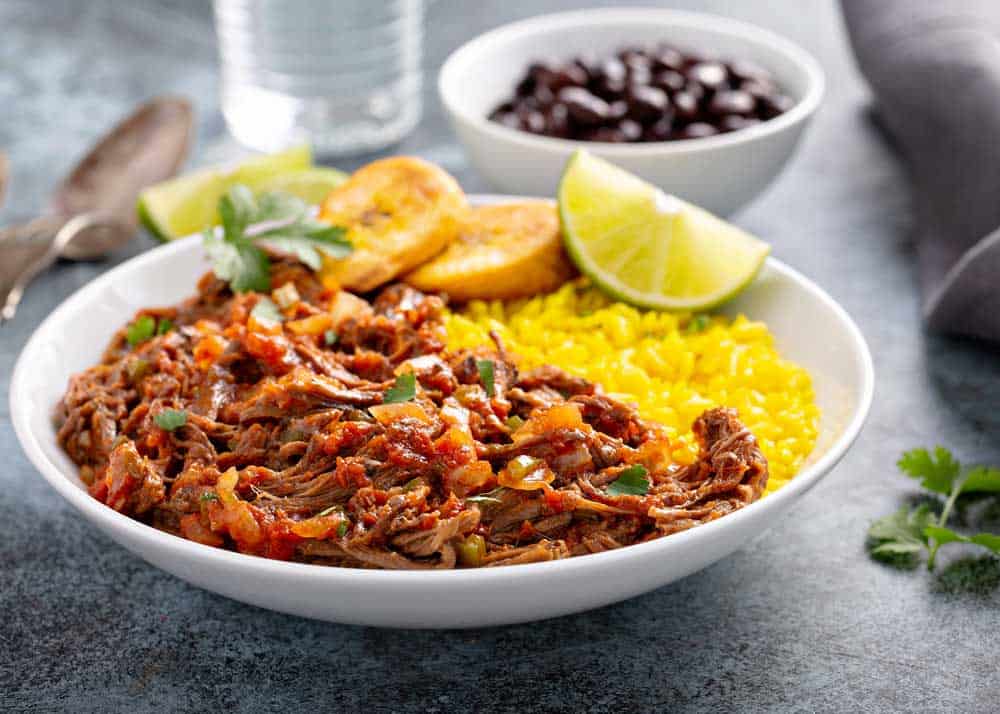
20 Cuban Foods: Savory Dishes
Here are a huge set of main dishes popular in Cuba. Which one will you try next? Let me know at the end of the post!
1. Ajiaco Cubano
Ajiaco cubano is a meat and vegetable stew. Beef, chicken, and pork are all used in this dish, with two types of beef used: flank steak and tasajo (which is similar to beef jerky and was traditionally made using horse meat).
Various indigenous vegetables are added, like boniatos (sweet potato), malangas (taro root), plátanos (plantains), and yucas (cassava).
Other ingredients like corn cobs, pumpkins, and tomatoes are added, as well as some spices to flavor.
2. Arroz con Pollo
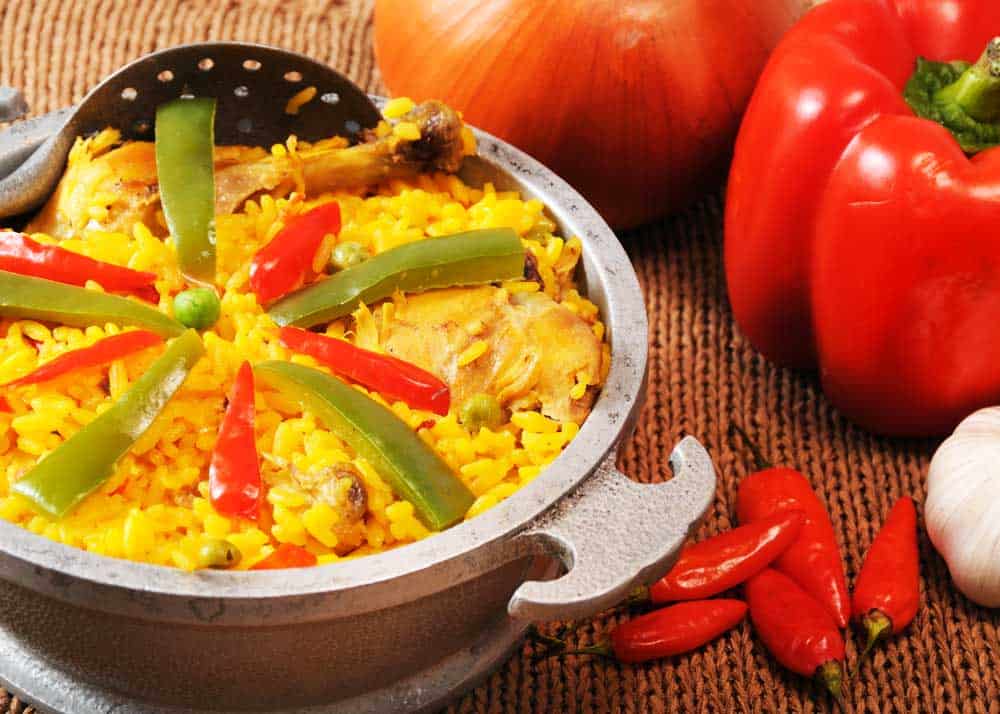
A dish that some say goes back to Spain (though that is debated), Arroz con Pollo is a popular dish throughout Latin America. It is similar to paella.
Like paella, it’s often made all in one pot. Chicken is browned on all sides then put aside. In the same pot, onions and red peppers are sauteed, before the chicken is put back in.
Then broth, tomato sauce, and more spices are added, along with the rice.
3. Arroz a la Cubana con Huevo
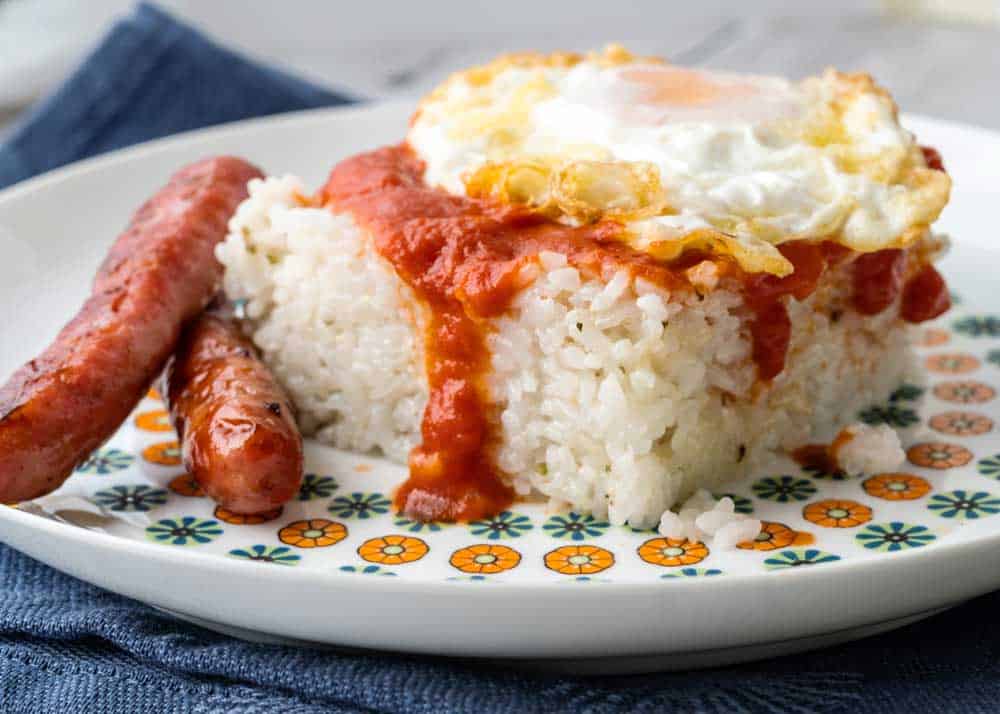
Arroz a la Cubana con huevo is a dish that’s not just popular in Latin America, but other countries of Spanish influence, like the Philippines.
Arroz a la Cubana con huevo is a simple rice dish that is made with tomato sauce, and is topped with a fried egg (thus “con huevo”) and served with a side of plátanos or banana.
Here’s the full recipe.
4. Arroz Congrí/Moros y Christianos and Arroz con Frijoles
Arroz congrí is a rice and bean dish. In this case, the rice and beans are cooked together. Arroz congrí generally refers to the dish when red beans are used, and is more common in eastern Cuba.
Another name for the dish is arroz Moros y Christianos. This time, black beans are used.
Some say the name traditionally refers to the centuries-long struggle between Muslims and Christians in Spain known as the Reconquista.
When the rice and beans are cooked seperately, then the dish can be referred to as arroz con frijoles.
5. Arroz Imperial
Arroz imperial is a baked rice dish that incorporates cheese, mayo, shredded chicken, and yellow rice.
Yellow rice (arroz amarillo) is first made using seasonings such as Bijol seasoning, annato powder, cumin, or tumeric.
Other ingredients like garlic, green pepper, and onions are also added. The cheese, chicken, mayo, and rice are then layered and baked.
6. Bistec de Palomilla
Bistec de palomilla (butterflied beefsteak) is a marinated beef dish. Steak is marinated with garlic, lime juice, pepper, and salt. This is pan-fried, topped with sliced onions, and served with rice and beans.
Similar dishes are popular throughout the former colonies of Spain.
7. Enchilado de Camarones
Enchilado de camarones is also known as Cuban shrimp creole.
A shrimp sauce is made with garlic, peppers, tomatoes or tomato sauce, onions, and seasonings. It’s then usually served on top of rice.
8. Fricase de Pollo
Fricase de pollo is a stew dish that was brought to the Caribbean by European settlers, particularly those from the south of France and Spain.
Its main ingredient is marinated chicken, tomato sauce, and wine (depending on the recipe, either red or white). Carrots, red peppers, potatoes, and olives can be added as well.
9. Fufú de Plátano
Fufú de platáno’s roots lead back to Africa, as it was brought to New World colonies by slaves.
It’s made with green plátanos that are peeled, cut into chunks, then boiled. It’s then mashed with ingredients like chicken stock, garlic, and onion, then seasoned. Fufú de plátno can also be served with pork.
10. Lechón Asado
Lechón asado is a pork dish. It’s made by marinating pork in mojo. Mojo is a citrus and garlic marinade that is used for various meats. The pork is usually marinated overnight, then roasted in an oven (though traditionally this meal is prepped with a whole pig roasted over a spit).
If you’re just using the pork shoulder, then this dish is called by another name, pernil.
Lechón asado is often served during special occasions or celebrations.
This dish, or a similar version, can also be used for pan con lechón (a roast pork sandwich), or sandwich Cubano (which will be talked about later). The bread used for these two sandwiches is Pan Cubano, which will also be talked about later.
11. Masas de Puerco Fritas
Masas de puerco fritas is another pork dish, this time with pork chunks that are fried. Like lechón asado, the pork is marinated first, this time for around 3 hours.
The pork is then cooked in a water and oil mixture and browned until it’s crispy. It’s then served topped with sauteed onions. The prep is similar to another dish on this list, bistec de palomilla.
12. Pan Cubano
Bread is pretty universal, and many cultures have their own version of bread that can be enjoyed. Despite its name, Pan Cubano isn’t actually from the country of Cuba but is a Cuban-American creation.
Pan Cubano has a similar style to a baguette in style. It’s unique in having a more rectangular cross-section when cut than a round one (like French or Italian bread).
Its ingredients are unique as well, as lard is often added. It’s also made without preservatives, so Pan Cubano is best enjoyed the same day.
However, even stale, it can still be useful, as other dishes (like deviled crab) will make use of dried Pan Cubano.
13. Picadillo a la Habanera
Picadillo is said to go back to the 19th Century, some sources claiming it originates from Mexico.
Picadilla a la Habanera is the Cuban version. It’s made with capers or olives, bell peppers, ground meat, potatoes, raisins, and tomato sauce. It’s also seasoned with various ingredients like cumin, garlic, and oregano.
It’s traditionally made with ground beef and can be enjoyed as a main meal served with beans and rice, or used as a filler for dishes like empanadas.
14. Plátano Maduro Frito
Plátanos are a staple throughout most of Latin America. In Cuba, ripe plantains are sliced and briefly fried in some oil. This is a very simple, yet delicious recipe.
While it’s true plátanos maduros are generally very sweet, sweet enough to be a nice snack or dessert, they’re often served as a side dish during the main course, thus why they’re on this part of the list.
15. Ropa Vieja
Ropa vieja is considered to be the quintessential Cuban dish.
Despite originating from Spain (from Sephardic Jews in the Iberian peninsula) and being popular in many Spanish-influenced countries, ropa vieja is also considered one of Cuba’s national dishes.
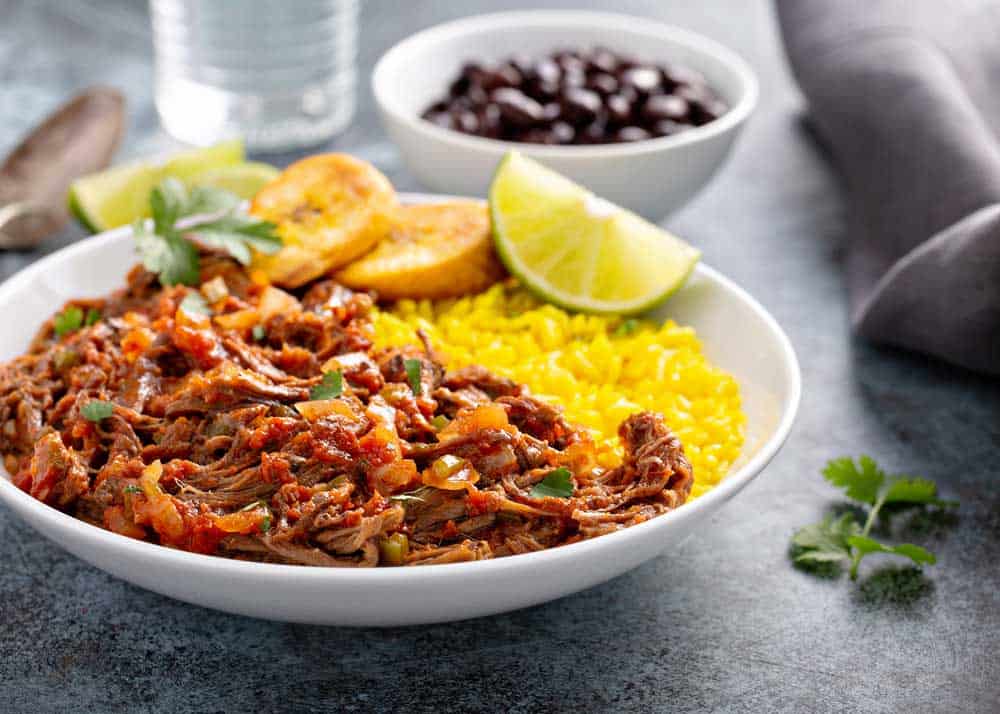
Ropa vieja is traditionally made by using shredded flank steak, onions, peppers, and tomatoes that are seasoned and slow-cooked over a few hours and served with black beans, plátanos, and rice.
The term “ropa viejo” literally translates to “old clothes”, and legend says the name comes from a man who couldn’t afford to feed his family, so he cut up and cooked his own clothes.
16. Sandwich Cubano
This sandwich likely came from cafes in either Tampa or Key West. It is a ham and cheese sandwich made with Pan Cubano, consisting of ham, mustard, pickles, roasted pork, and Swiss cheese.
In Tampa, salami is included in the sandwich, but not in South Florida. In Key West, their variation of Sandwich Cubano may also include lettuce, mayo, and tomatoes.
17. Tostones or Chatinos
Tostones are very similar to Plátano Maduro Frito, stated earlier on this list. They’re also used as a side dish in many Latin American dishes. The difference is in preparation and taste.
Plátanos maduros are made with ripe plantains.
Tostones, on the other hand, are fried green plantains that are usually flattened and seasoned with salt. They are generally more savory than plátanos maduros.
18. Tamales Cubanos or Criollos
Tamales are also a dish with different variations throughout Latin America. For the Cuban version, the dough is made using kernels from fresh corn, as well as butter, masa harina, and water.
Fried pork and seasonings are added throughout the dough, and then they’re wrapped in corn husks and cooked in water.
19. Vaca Frita
Vaca Frita is another shredded beef dish, like Ropa Vieja. The beef is boiled in water or broth, then shredded, seasoned to taste (one recipe I found was with garlic powder, pepper, and salt; another recipe used cumin), then fried until browned and crispy.
This dish also has a chicken variation, vaca frita de pollo.
20. Yuca con Mojo
Yuca con Mojo is a savory dish that can be eaten as an appetizer or as a side dish.
It consists of Yuca, which is a Cassava root vegetable, that is boiled, then served with mojo, a garlic sauce that is also used to marinate beef.
More reading: Plantain vs Banana (9 Differences)
5 Cuban Desserts and Sweet Snacks
21. Arroz con Leche
Arroz con leche is Cuba’s version of rice pudding. Short grain rice is boiled with cinnamon sticks and lemon peels.
The cinnamon and lemon is then removed, and condensed milk, evaporated milk, and vanilla are stirred into the rice. After being left to cook for a few minutes, sugar is then added.
22. Buñuelos
Buñuelos are a fried treat that is made from yuca that is cooked, then mixed with an egg, flour, and salt. This is made into a dough, shaped into a figure eight, and fried. Anise, cinnamon, and vanilla can be added as flavoring. Buñuelos are also usually served with syrup (like anise syrup) and are popular during the holiday season.
23. Flan Cubano
Flan Cubano is a variation of the dessert crème caramel, that comes from Southern Europe. Its main ingredients are eggs, condensed and evaporated milk, sugar, and vanilla.
Some variations include toppings like coconut or rum raisin.
You can add two scoops of vanilla ice cream to make the dish Copa Lolita.
24. Pastelitos
This dessert is a baked puff pastry dish with a filling. A popular filling would guava paste and cream cheese. Others include coconut and dulce de leche.
While there is no definitive answer as to how pastelitos were invented, they are definitely a well-loved Cuban dessert.
25. Torticas de Morón
These cookies originated from the town of Morón, which is located approximately 250 miles or almost 400 km (as the crow flies) southeast of Havana.
Torticas de Morón are a sugar cookie, typically made with lard and flour, as well as lime juice or lime zest.
3 Cuban Drinks
26. Coffee (Cafecito)
Cafecito is a dark roast espresso that is considered to be twice as strong as a regular American coffee. It’s often made with sugar, and like Italian espresso, is served in a small cup.
Is your Spanish a little rusty? Here’s how to order coffee in Spanish.
27. Malta
Malta is a very popular drink throughout the Caribbean.
It’s a carbonated, malt drink that is similar to stout, but slightly sweet, and non-alcoholic. It’s often mixed condensed milk.
28. Rum
Seeing as rum is made from sugarcane, and Cuba just so happens to have excellent sugarcane, it makes sense that Cuban rum is considered to be of excellent quality. They have generally aged longer (añejo) and make for a smoother taste.
You can make various cocktails with this rum can be made, like Cuba Libres, Mojitos, or an Old Cuban.
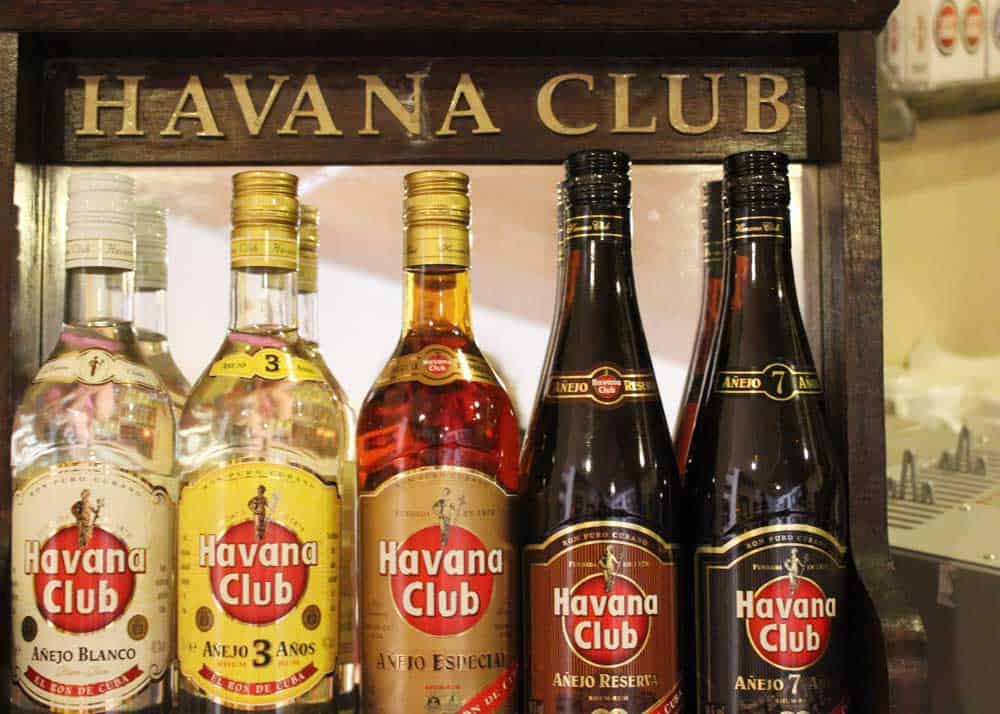
Hungry for more? Check out these dishes from El Salvador, Bolivia, Chile, and Peru.
Your Turn!
These Cuban and Cuban-American foods look absolutely delicious. I especially look forward to trying pretty much any of the rice dishes (being Filipino, a meal isn’t complete without rice) as well as buñuelos (I have a massive sweet tooth).
See any of your favorite foods or drinks? Which new ones do you want to try? Which ones did I miss? Let us know in the comments below! I look forward to learning more from you!


